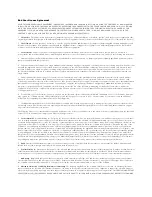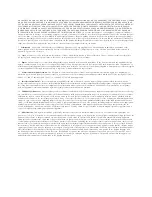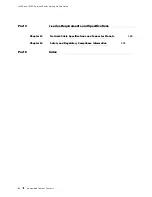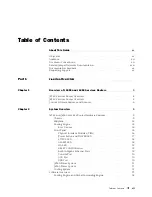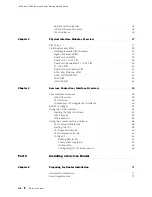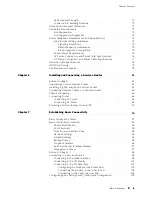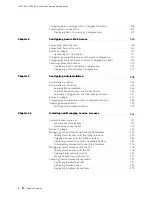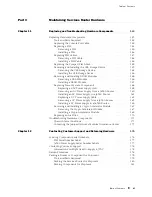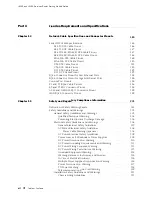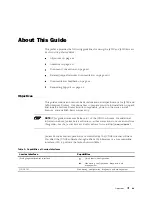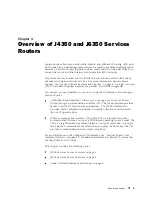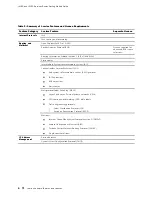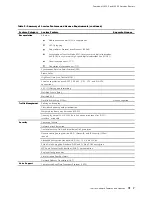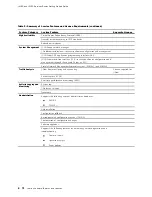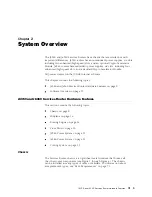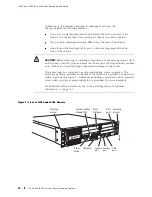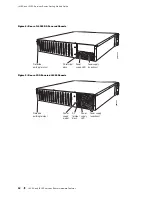
About This Guide
Table 3: Text and Syntax Conventions
Convention
Description
Examples
Bold sans serif typeface
Represents text that you type.
To enter configuration mode, type the
configure
command:
user@host>
configure
Fixed-width typeface
Represents output that appears on the
terminal screen.
user@host> show chassis alarms
No alarms currently active
Italic typeface
Introduces important new
terms.
Identifies book names.
Identifies RFC and Internet draft
titles.
A policy
term
is a named
structure that defines match
conditions and actions.
JUNOS System Basics
Configuration Guide
RFC 1997,
BGP Communities
Attribute
Italic sans serif typeface
Represents variables (options for which
you substitute a value) in commands or
configuration statements.
Configure the machine’s domain name:
[edit]
root@#
set system domain-name
domain-name
Sans serif typeface
Represents names of configuration
statements, commands, files, and
directories; IP addresses; configuration
hierarchy levels; or labels on routing
platform components.
To configure a stub area,
include the
stub
statement at
the
[edit protocols ospf area
area-id]
hierarchy level.
The console port is labeled
CONSOLE
.
< > (angle brackets)
Enclose optional keywords or variables.
stub <default-metric
metric
>;
| (pipe symbol)
Indicates a choice between the mutually
exclusive keywords or variables on
either side of the symbol. The set of
choices is often enclosed in parentheses
for clarity.
broadcast | multicast
(
string1
|
string2
|
string3
)
# (pound sign)
Indicates a comment specified on the
same line as the configuration statement
to which it applies.
rsvp { # Required for dynamic MPLS
only
[ ] (square brackets)
Enclose a variable for which you can
substitute one or more values.
community name members [
community-ids
]
Indention and braces ( { } )
Identify a level in the configuration
hierarchy.
; (semicolon)
Identifies a leaf statement at a
configuration hierarchy level.
[edit]
routing-options {
static {
route default {
nexthop
address
;
retain;
}
}
}
J-Web GUI Conventions
Document Conventions
xvii
Summary of Contents for J4350
Page 14: ...J4350 and J6350 Services Router Getting Started Guide xiv Table of Contents...
Page 22: ...2 J series Overview...
Page 68: ...J4350 and J6350 Services Router Getting Started Guide 48 Field Replaceable PIMs...
Page 75: ...Services Router User Interface Overview Figure 25 J Web Layout Using the J Web Interface 55...
Page 88: ...J4350 and J6350 Services Router Getting Started Guide 68 Using the Command Line Interface...
Page 90: ...70 Installing a Services Router...
Page 100: ...J4350 and J6350 Services Router Getting Started Guide 80 Site Preparation Checklist...
Page 112: ...J4350 and J6350 Services Router Getting Started Guide 92 Powering a Services Router On and Off...
Page 144: ...J4350 and J6350 Services Router Getting Started Guide 124 Verifying Secure Web Access...
Page 162: ...142 Maintaining Services Router Hardware...
Page 194: ...J4350 and J6350 Services Router Getting Started Guide 174 Troubleshooting Hardware Components...
Page 204: ...184 J series Requirements and Specifications...
Page 220: ...J4350 and J6350 Services Router Getting Started Guide 200 ISDN RJ 45 Connector Pinout...
Page 267: ...Part 5 Index Index 247...
Page 268: ...248 Index...

